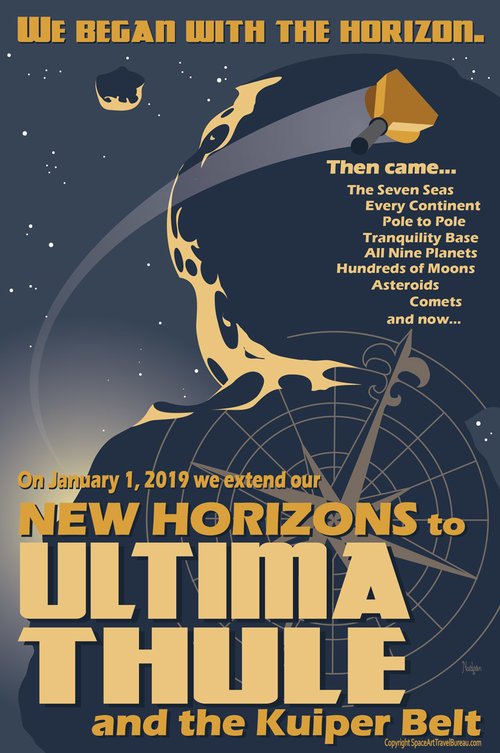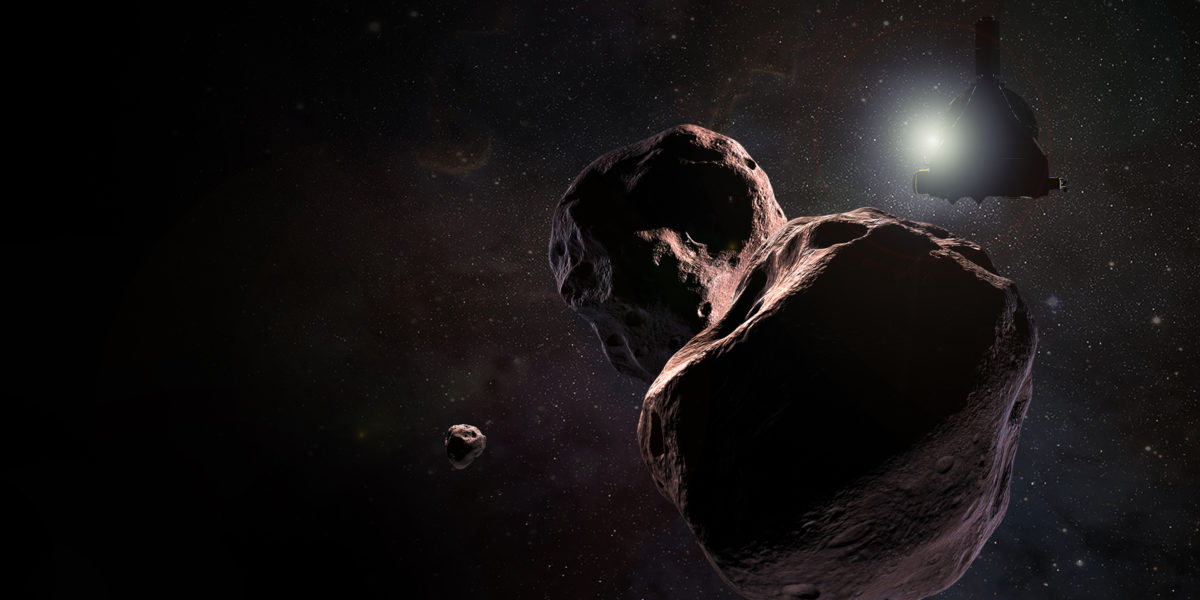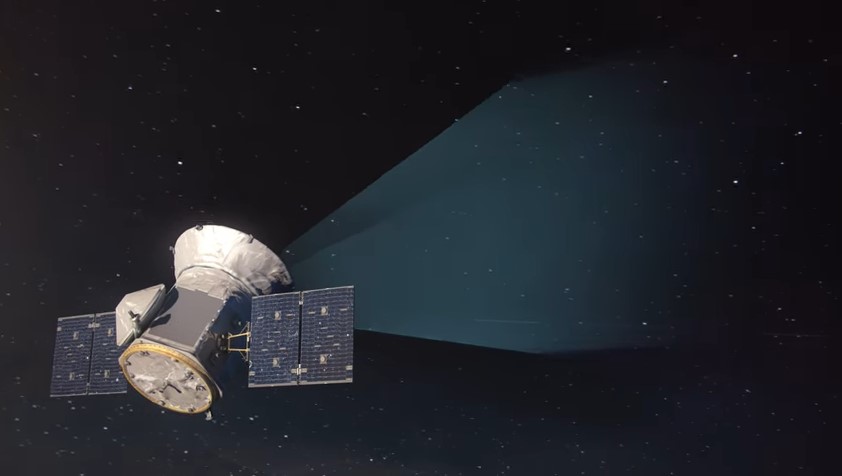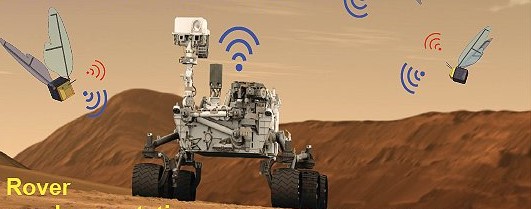
If all goes well, New Horizons will zip by Ultima Thule on New Year’s Day at 12:33 a.m. EST (0533 GMT) at a whopping 39,000 mph (62,764 km/h). At its closest point, New Horizons will be 2,200 miles (3,540 km) from Ultima Thule. That’s about the distance between Los Angeles and Washington, D.C., with Ultima Thule appearing about as large to New Horizons as the full moon does to observers on Earth, Stern said.
The stakes are high. It takes 6 hours and 8 minutes for a signal to reach Earth from New Horizons. A roundtrip for a signal is just over half a day: 12 hours and 15 minutes. So New Horizons will have to work on its own during the actual rendezvous, just as it did at Pluto.
Poster courtesy SpaceArtTravelBureau.com








